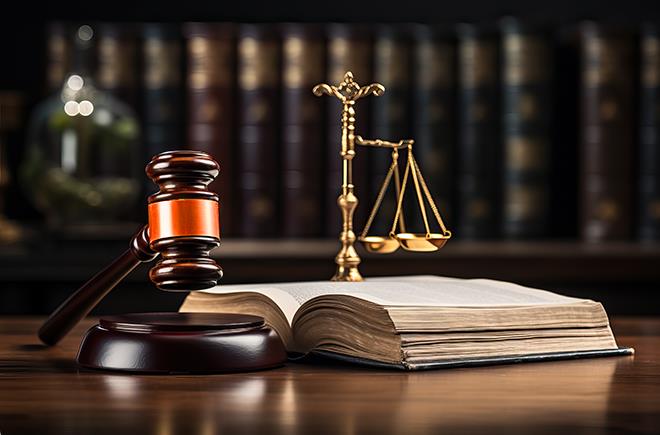Implied License and De Minimis Use Defenses in IP Litigation: Raising and Contesting the Defenses

Course Details
- smart_display Format
On-Demand
- signal_cellular_alt Difficulty Level
- work Practice Area
Trademark and Copyright
- event Date
Thursday, March 25, 2021
- schedule Time
1:00 p.m. ET./10:00 a.m. PT
- timer Program Length
90 minutes
-
This 90-minute webinar is eligible in most states for 1.5 CLE credits.
This CLE course will guide IP counsel on using the implied license and de minimis use defenses in copyright and trademark litigation. The panel will examine recent litigation and discuss the analysis for both defenses and when the defenses are likely to succeed. The panel will offer best practices for using and arguing against the defenses in litigation.
Faculty

Mr. Sholder focuses his practice on litigation, counseling, and dispute resolution in connection with entertainment, media, art, and IP matters. He represents and advises clients across various industries in copyright, trademark, trade secrets, right-of-publicity, unfair competition, domain name, and commercial and business disputes, as well as defamation defense. Mr. Sholder has appeared in federal and state courts around the country as well as administrative and arbitral tribunals and has handled cases from pre-suit negotiations through trial, post-trial procedures, and appeals. He is a frequent writer and speaker on issues related to copyright and trademark in the entertainment and digital media space, with a recent focus on generative AI.

Mr. Meyer advises intellectual property owners on strategies for protecting and enforcing their rights, including through licensing and litigation. He also consults with IP owners regarding portfolio management and confidentiality measures to help them develop and safeguard their innovations. Mr. Meyer worked on all areas of IP litigation including copyright, patent, trademark, and trade secret. His areas of technical familiarity include video games and other software; animation; clothing; mechanical and electronic devices; biotech, pharmaceutical, and other chemical compounds and methods; banking technology; networking technology; and telecom technology.

Mr. Dickstein maintains a broad-based litigation practice with a concentration on intellectual property matters in the music, motion picture and advanced media industries. He has represented music publishers and record labels in copyright infringement and royalty disputes, defended major media companies in trademark infringement actions, and advised motion picture studios and film producers on copyright issues.
Description
Recent litigation has shined a light on the increased use of two defenses--the implied license defense and the de minimis use defense in IP litigation. In the implied license defense case, defendants have asserted that there is a nonexclusive license created by implication despite there being no written license. The de minimis use defense arises when the use of the copyrighted work is so small that it does not meet the quantitative threshold of substantial similarity.
For example, Take-Two Interactive was involved in two different lawsuits in which the courts came to two different conclusions regarding de minimis use and an implied license. In both lawsuits, Take-Two was sued over its depiction of athletes’ tattoos in video games. The Southern District of New York concluded, on summary judgment, that the use in video games was de minimis and was subject to an implied license. Solid Oak Sketches L.L.C. v. 2K Games Inc. (S.D.N.Y. 2020). In contrast, the Southern District of Illinois found a triable issue of fact on the implied license defense and rejected the de minimis use defense. Alexander v. Take-Two Interactive Software Inc. (S.D. Ill. 2020).
It is important for IP litigators for both plaintiffs and defendants to understand the contours of these two lesser-known defenses, especially in the context of current technology and new media cases, and how various courts analyze them. Litigators should be prepared to either raise the defenses or argue against them.
Listen as our authoritative panel of IP attorneys examines the implied license and de minimis use defenses in IP litigation. The panel will examine recent litigation and discuss the analysis for both defenses and when the defenses are likely to work. The panel will offer best practices for using and defending against the defenses in litigation.
Outline
- Implied licenses defense
- De minimis use defense
- Recent court treatment
- Best practices
- Raising the defense
- Arguing against the defense
Benefits
The panel will review these and other key issues:
- How have the courts treated the implied license defense in recent cases?
- Where is the line of delineation between de minimis use and infringement?
- What best practices can IP counsel employ when arguing against a de minimis use defense?
Related Courses

Demonstrating Use in Commerce for Trademark Registration and Enforcement
Tuesday, April 15, 2025
1:00 p.m. ET./10:00 a.m. PT

IP Due Diligence in M&A: Leveraging Diligence Results When Negotiating Price and Other Deal Terms
Thursday, April 10, 2025
1:00 p.m. ET./10:00 a.m. PT

Comparative Advertising: Avoiding Trademark Infringement, Disparagement
Friday, April 11, 2025
1:00 p.m. ET./10:00 a.m. PT
Recommended Resources
Getting the Most Out of BARBRI Resources
- Learning & Development
- Business & Professional Skills
- Talent Development
Transforming CLE from a Requirement to a Career Advantage
- Learning & Development
- Career Advancement
- Talent Development